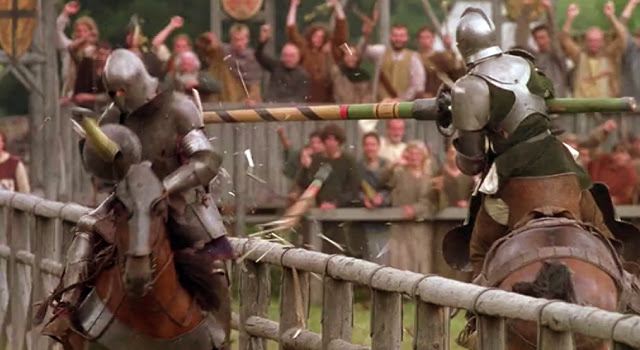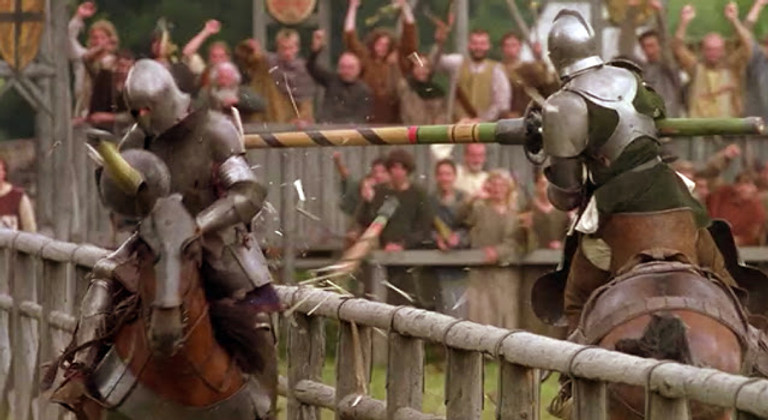Medieval Jousting: A Brief History
Posted by Sword N Armory on Apr 1st 2018

When you think of medieval jousting, many things come to mind. The clapping that the horses create as their hooves slam against the ground, creating a symphony of sound. Metal clanging loudly as knights violently battled for their very lives. The anticipation of wondering who would be victorious as the last man standing. This was the exciting and deadly sport known as medieval jousting.
Back in the day, believe it or not at one point, knights weren’t considered as the elite class we know them now to be. The sport actually rarely included members of royalty or societal classes that were considered elite. The term “knight” was given to those of serf-like class status who would use what we now know as lances, as weapons, normally being the first line of defense in battle. It wasn’t until later that jousting became more of a sport, where more of the elite classes participated to gain the glory of perceived nobility.
Like the colonial days, where disputes were settled by gun duels, jousts were often used in the same manner. A fact most people are unaware of, is that they were also used as an excuse in order to assassinate an enemy. So, often when a member of a lower class of society had a disagreement with someone of a higher ranking class, the member of the higher class would often set up a rigged joust in order to exact revenge. The higher ranking official would often provide his opponent armor or weapons that were not up to standard so that his odds of winning were almost impossible. Defective lances that were likely to break, or armor that was thin, were typical tricks of the trade. The elites knew that if a dispute was done flat out in the open, there would be public a public outcry of injustice. A “fair” joust on the other hand was considered a noble and civilized way to come to a resolution.
The church involved itself and tried banning the sport. They deemed it immoral and sinful, as a gluttonous thirst for blood, not unlike the games of Rome which were held in its famous Colosseum. Eventually, Pope Innocent the Second banned jousting all together. Before the official ban, members of the church would spread horror stories about the injuries and gruesome ways in which knights died due to the sport. They tried to detract young men from wanting to participate, but the church could not stop people’s fascination with the sport. The ban was eventually lifted in 1316.
Jousting still exists in some form today. England and Germany continued the traditional form of jousting well into the sixteenth century, until France officially banned it in response to the accidental death of King Henry the second. Jousting still continues to evolve today though, as it is the official state sport of Maryland in the U.S. Of course, today’s version of jousting is much safer.












